The Philadelphia Museum of Art
April 28, 2025
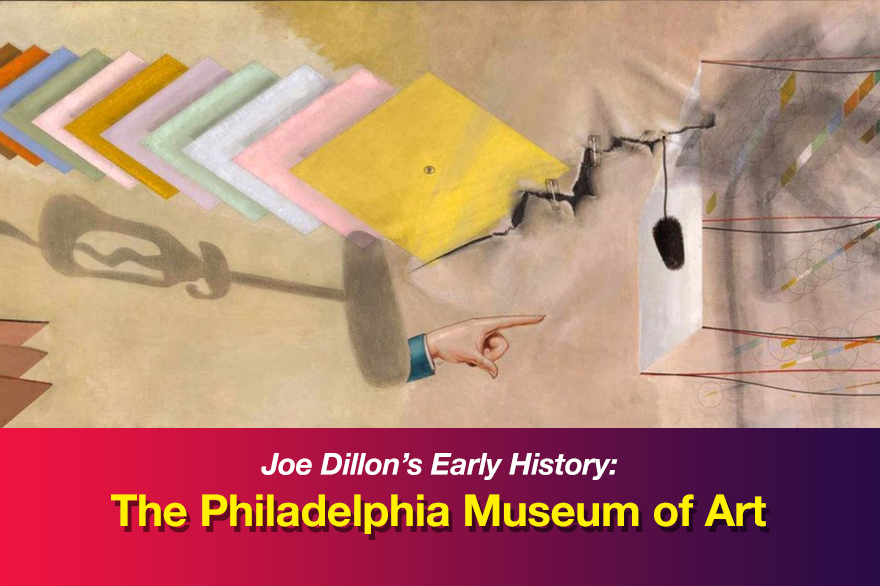
As I began to head south, the next major city I wanted to explore was Philadelphia. In particular, the Philadelphia Museum of Art. When I arrived after a short couple of hour drive, the museum turned out to be part of a large complex.
I set out to explore the art in chronological order. The first painting that grabbed my attention was "The Annunciation" painted by Rogier van der Weyden in 1460. The painting seemed so bright, clear and modern for having been painted in the 15th century.
"The Adoration of the Magi" was also painted in the 15th century, in this case by Hieronymus Bosch.

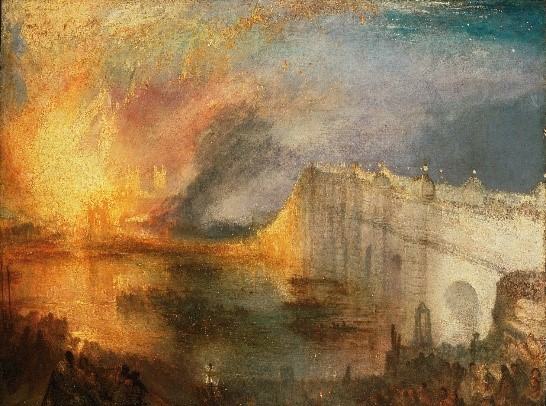 For the painting we focus on next, out of the museum’s huge collection, we jump to the 19th century. As you can see, Turner’s style for "The Burning of the House of Lords and Commons" is radically different than the previous 2 paintings.
For the painting we focus on next, out of the museum’s huge collection, we jump to the 19th century. As you can see, Turner’s style for "The Burning of the House of Lords and Commons" is radically different than the previous 2 paintings.
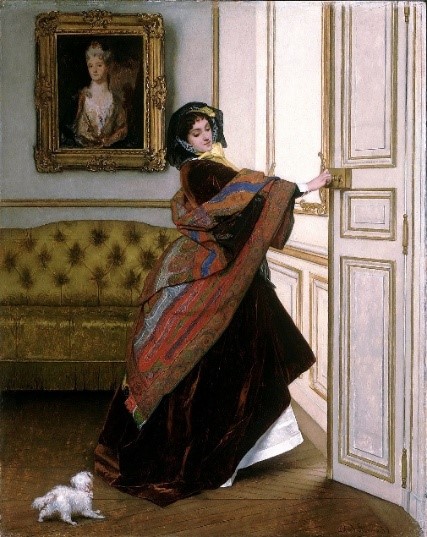 I love this next painting – "Will You Go Out With Me, Fido?" by Andrew Stevens. A Belgian painter, he captures an elegant modern woman in Upper Middle Class Parisian life.
I love this next painting – "Will You Go Out With Me, Fido?" by Andrew Stevens. A Belgian painter, he captures an elegant modern woman in Upper Middle Class Parisian life.
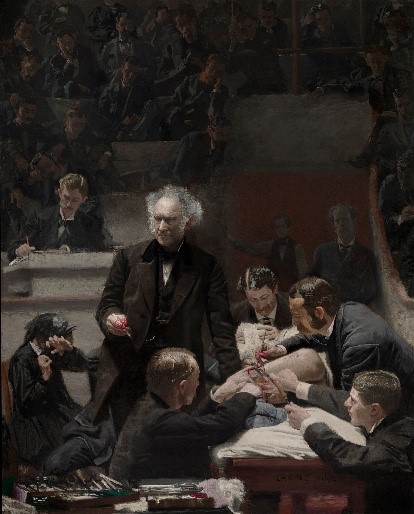 We next jump to 19th century America and a dark, somber painting by Thomas Eakins. In "The Gross Clinic," he captures a medical school class in surgery.
We next jump to 19th century America and a dark, somber painting by Thomas Eakins. In "The Gross Clinic," he captures a medical school class in surgery.
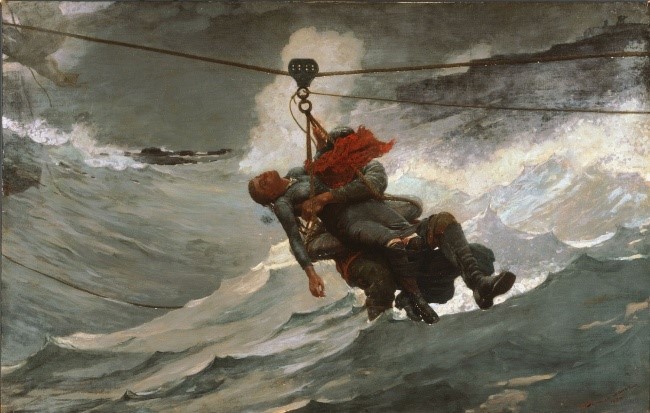 For our next painting we revisit another 19th century American painter Winslow Homer. You may recall “The Gulf Stream.” Here with “The Life Line” he graphically captures another dramatic moment.
For our next painting we revisit another 19th century American painter Winslow Homer. You may recall “The Gulf Stream.” Here with “The Life Line” he graphically captures another dramatic moment.
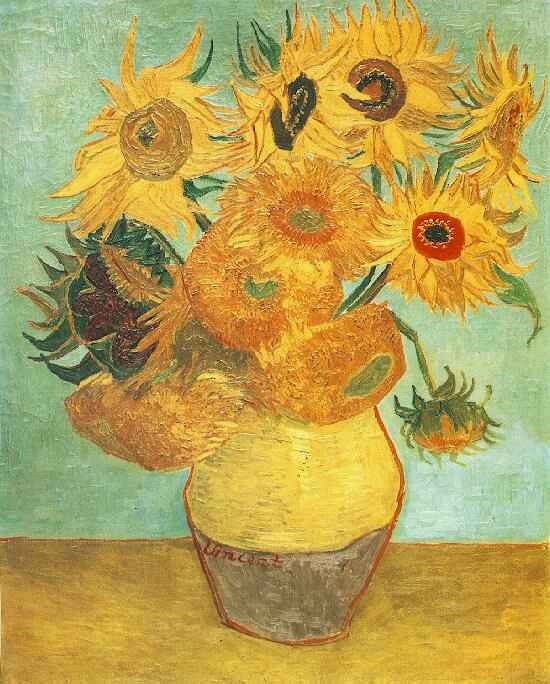 For our next painting, we visit one of my favorite painters, Vincent Van Gogh, with a dramatic example of one of his favorite subjects sun flowers.
For our next painting, we visit one of my favorite painters, Vincent Van Gogh, with a dramatic example of one of his favorite subjects sun flowers.
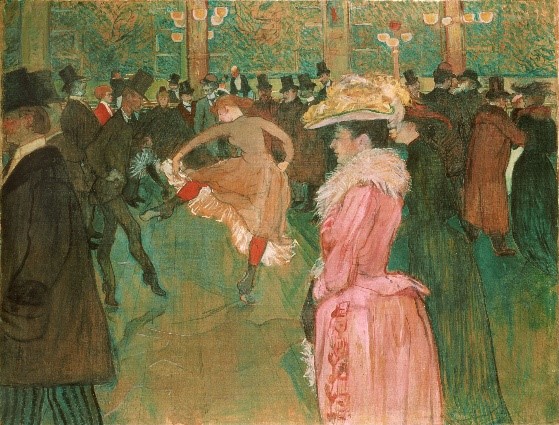 For our next painting, we visit a classic French painter, Henri Toulouse Lautrec, depicting one of his favorite subjects: dance.
For our next painting, we visit a classic French painter, Henri Toulouse Lautrec, depicting one of his favorite subjects: dance.
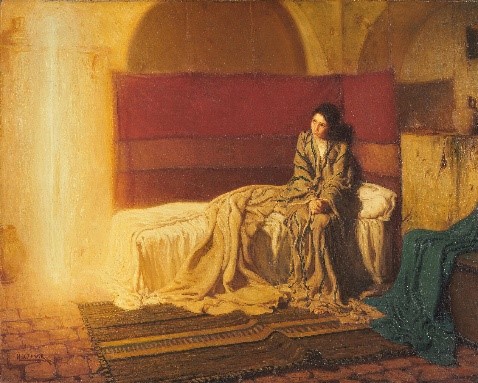 Our next painting is a spiritual subject “The Annunciation” painted by the American Tanner, set in the 19th century using an almost “Turner” light.
Our next painting is a spiritual subject “The Annunciation” painted by the American Tanner, set in the 19th century using an almost “Turner” light.
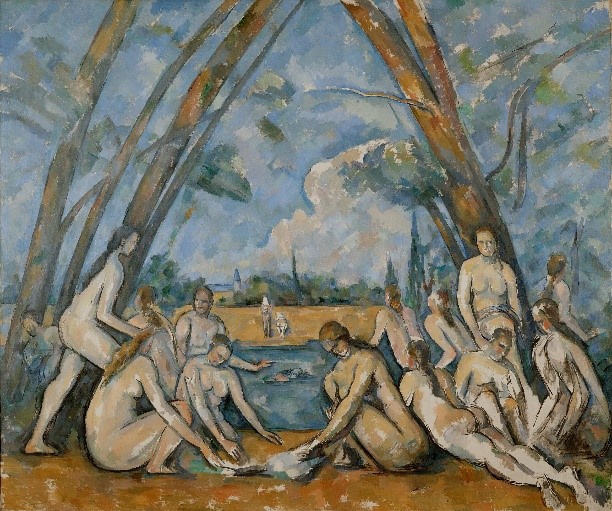 The next painting “The Bathers,” a Post Impressionist classic was painted by the great French painter Paul Cezanne.
The next painting “The Bathers,” a Post Impressionist classic was painted by the great French painter Paul Cezanne.
We next leap into the 20th century with two cubist paintings. The first, “Tea Time” by Jean Metzinger. And the second, “Three Musicians” by Picasso.
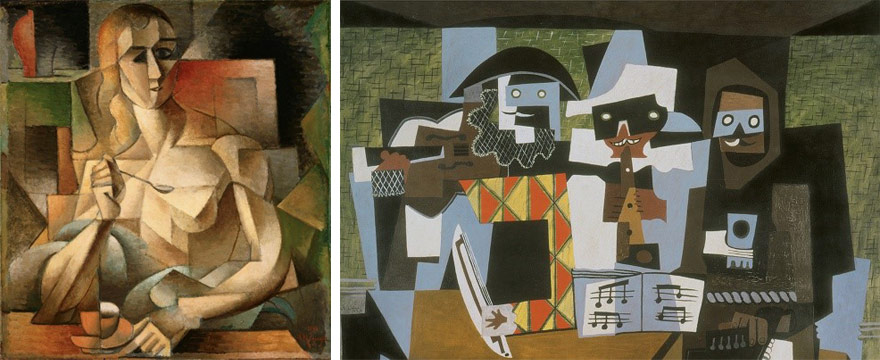
I would like to now introduce you to an artist I discovered for the first time at the Philadelphia Museum of Art: Marcel Duchamp. Duchamp seems to me anyway to be one of the most complex artists I have ever encountered. On the one hand, he was incredibly innovative. At the same time, he made fun of so many traditions, icons, and, most of all, himself. He also seemed to master nearly every aspect of art he tried. He was also a genius chess player.
Bear in mind everything he did was over 100 years ago. He invented the concept of the Ready-Made. He signed a urinal but he signed it "R. Mutt."
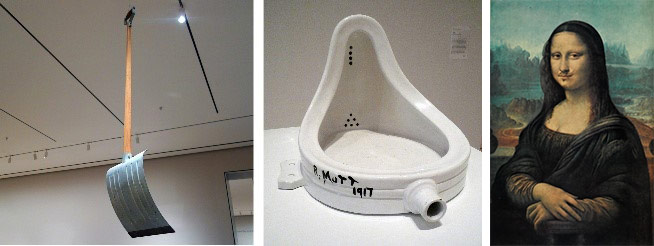
Duchamp was The Guy who painted the moustache on the “Mona Lisa.” His cubist painting, “Nude Descending a Staircase,” is still controversial today, over 100 years later. “The Big Glass” has had dozens of books and papers written about it.
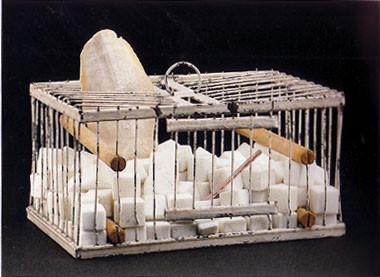 The last two are two of my favorite, and capture Duchamp’s wit and sense of fun. The first of the two is called “Why Not Sneeze.” It appears to be a bird cage filled with sugar cubes. Only the cubes are not sugar. Each cube is made out of marble and the cage is incredibly and deceptively heavy.
The last two are two of my favorite, and capture Duchamp’s wit and sense of fun. The first of the two is called “Why Not Sneeze.” It appears to be a bird cage filled with sugar cubes. Only the cubes are not sugar. Each cube is made out of marble and the cage is incredibly and deceptively heavy.
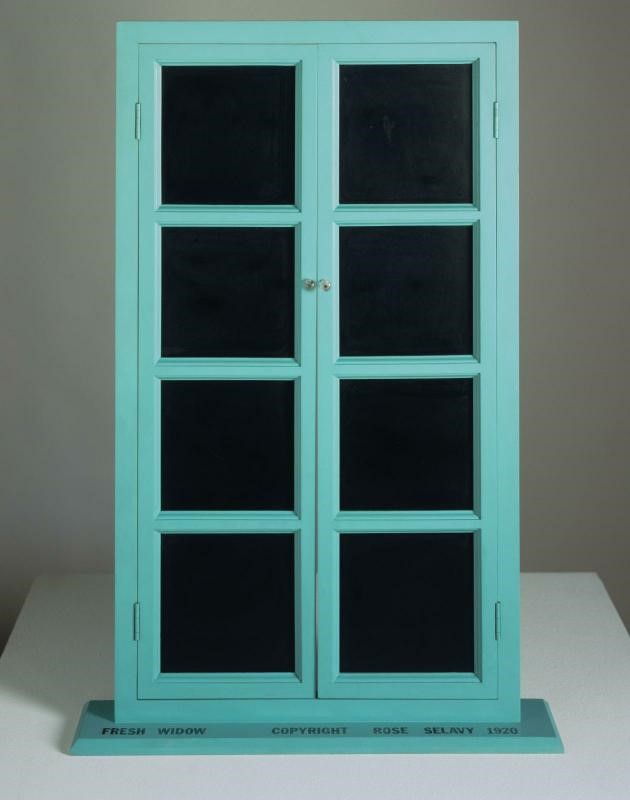 The second appears to be a window. Though all the “glass panes” are painted black. The object is called “Fresh Widow.” Duchamp “signed” “Fresh Widow” but he did not sign it Marcel Duchamp. He signed it “Rose Selavy,” the French “c’est la vie” – such is life. Everything was a pun or a metaphor or a cleaver twist. He has much in common with another genius artist James Joyce who wrote Ulysses based on Homer’s Greek classic — a brilliant novel that covers 24 hours in one man’s life (Leopold Blume) in Dublin Ireland in 1904 — considered by many to be the greatest and funniest novel of the twentieth century. Joyce’s last book Finnegan’s Wake is a 600 page novel telling a story that covers only 8 hours (one man’s night’s sleep) and it is written in puns in 7 languages. Joyce wrote a novel it would take you a lifetime to figure out. And a perfect book to read if you can’t get to sleep.
The second appears to be a window. Though all the “glass panes” are painted black. The object is called “Fresh Widow.” Duchamp “signed” “Fresh Widow” but he did not sign it Marcel Duchamp. He signed it “Rose Selavy,” the French “c’est la vie” – such is life. Everything was a pun or a metaphor or a cleaver twist. He has much in common with another genius artist James Joyce who wrote Ulysses based on Homer’s Greek classic — a brilliant novel that covers 24 hours in one man’s life (Leopold Blume) in Dublin Ireland in 1904 — considered by many to be the greatest and funniest novel of the twentieth century. Joyce’s last book Finnegan’s Wake is a 600 page novel telling a story that covers only 8 hours (one man’s night’s sleep) and it is written in puns in 7 languages. Joyce wrote a novel it would take you a lifetime to figure out. And a perfect book to read if you can’t get to sleep.
The banner for this newsletter is by Duchamp and summarizes all of painting up to that point in time. A tiny hand full of artists are like a tiny handful of great scientists like Sir Isaac Newton or Albert Einstein, they absorb everything that came before them and then make one or more quantum leaps ahead. They are humans who take one’s lifetime to absorb and understand. That is true creative greatness. Duchamp, Joyce and Einstein all shared a warm, similar brand of humor and a deep affection for humanity. Spending time with them is always a deeply rewarding experience. All three embody the spirit of encouragement; in other words, love.
Discovering Marcel Duchamp at the Philadelphia Museum of Art was an unexpected treat. Since 1964 I have spent dozens of hours getting to Duchamp. He is a brilliant and deeply humane being. And I feel I have barely scratched the surface of what he has to offer. As always, I try to provide a doors hoping that you will pass through one or more of these doors and discover worlds you had never enjoyed before. Like I do with my JDD shakes, I am trying to enrich your life. I hope you are enjoying the ride as much as I am enjoying sharing it.
As always, I wish you and your family vigorous health and abundant energy. And be sure to keep feeding your big, amazing brain with high quality nutrition.
Joe
 Cart (0)
Cart (0)

